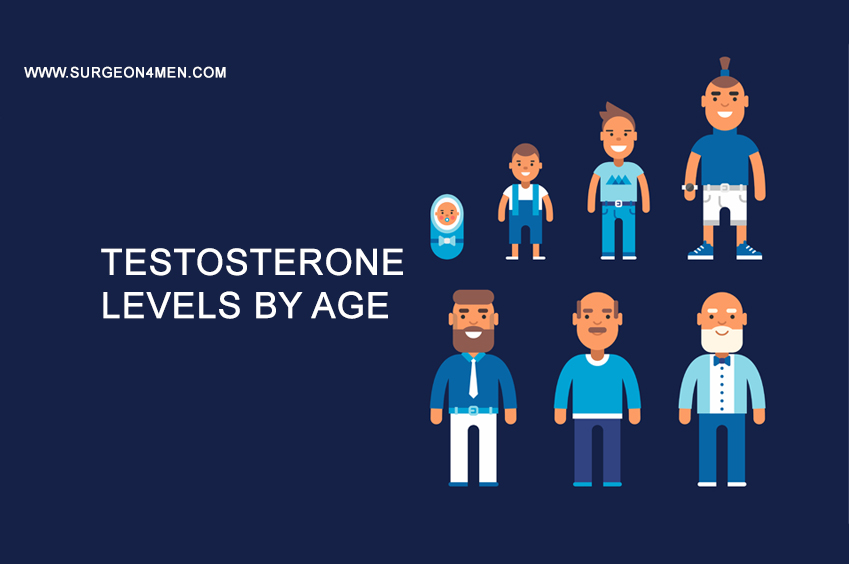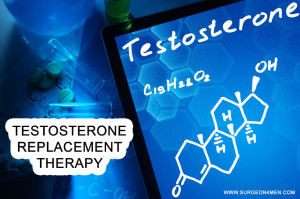Testosterone Levels By Age
Testosterone levels tend to fluctuate with advancing age and it is totally physiological. The decline in testosterone secretion with aging is mainly due to negative changes in metabolism and lower requirement of this vital hormone. However, in some individuals, an existing disease process or pathology may lead to abrupt deterioration in the secretion of testosterone, which may make these individuals more prone to certain health issues.
Why Is It Important To Know Normal Testosterone Levels According To Age?
Knowing age-appropriate testosterone levels is therefore important for following reasons:
- Diagnosing what might be causing disturbing symptoms in the individual (for example sub-normal testosterone levels may present with low sex drive, fat deposition and fertility issues).
- Knowing if you are a candidate of testosterone replacement therapy.
- Knowing if you are at higher risk of developing certain health issues such as diabetes, cardiovascular dysfunction.
Testosterone Levels By Age
Age related testosterone decline most specifically affects free testosterone levels (the bioavailable form of testosterone that is not bound to sex hormone binding globulin).
1. In The Intrauterine Life:
Testosterone produced by developing male gonads plays a major role in the development of males during intrauterine life. Normal testosterone levels are required for:
- Brain development
- Development of primary male characteristics and male reproductive system
It is imperative to mention that ‘normal’ testosterone exposure is vital to the health of the offspring. Exposure to very high levels of testosterone can lead to autism in male babies (2); whereas very low levels of testosterone are linked to a high risk of developing Alzheimer’s disease early in life (3).
During early infancy, testosterone levels remains high in the male baby until 4-5th month of extra-uterine life. The normal testosterone range at 0-5 months is:
- Male baby = 75-400 ng/dL
- Female baby = 20-80 ng/dL
After 5th month, testosterone levels continue to decrease and remains low until pre-puberty years (9-11 years). The reference age for testosterone in males during this time (6months – 9 years) is same as that of females i.e. 7-20 ng/dL
3. Adolescence:
The testosterone levels begins to rise gradually just before the puberty (i.e. 9 -11 years) and peaks during early adulthood (i.e. 17 – 18 years). The reference range for testosterone during different age groups is:
- <7-130 ng/dL during 9 – 11 years
- <7-800 ng/dL during 12 – 13 years
- <7-1,200 ng/dL at 14 years
- 100-1,200 ng/dL during 15 – 16 years
- 300-1,200 ng/dL during 17 – 18 years
- 240-950 ng/dL at 19 years
High levels of testosterone manifests as:
- Deepening of voice
- Growth of facial and body hair
- Broadening of shoulder
- Increase in height and muscle mass
Adults:
In adults, testosterone levels tend to decline after a certain age. Scientists believe that after 30 years of age, rate of testosterone secretion decrease 1% every year for the rest of the life. According to a new study, the testosterone levels decrease by 30% between 25 to 75 years of age.
Normal or recommended testosterone levels in an adult male (over the age of 19 years) are 270-1,070 ng/dL. It is imperative to mention that testosterone levels in an average female are very low (especially when compared to males) i.e. 15-70 ng/dL.
Declining testosterone levels may present with:
- Declining libido and sex drive
- Negative changes in the muscle mass and metabolism (that may present with weight gain and fat deposition)
- Emotional changes (such as anxiety, depression, mood disorders, low self-esteem)
- Erectile dysfunction
- Negative changes in fertility
If you are suspecting hypogonadism, speak to your doctor to diagnose and manage premature onset hypogonadism with medications or replacement therapy.
References
1. Muram, D., Zhang, X., Cui, Z., & Matsumoto, A. M. (2015). Use of hormone testing for the diagnosis and evaluation of male hypogonadism and monitoring of testosterone therapy: application of hormone testing guideline recommendations in clinical practice. The journal of sexual medicine, 12(9), 1886-1894.
2. Xu, X. J., Shou, X. J., Li, J., Jia, M. X., Zhang, J. S., Guo, Y., … & Han, J. S. (2013). Mothers of autistic children: lower plasma levels of oxytocin and arg-vasopressin and a higher level of testosterone. PloS one, 8(9), e74849.
3. Vladeanu, M., Giuffrida, O., & Bourne, V. J. (2014). Prenatal sex hormone exposure and risk of Alzheimer disease: a pilot study using the 2D: 4D digit length ratio. Cognitive and Behavioral Neurology, 27(2), 102-106.
4. http://www.medicinenet.com/high_and_low_testosterone_levels_in_men/views.htm


